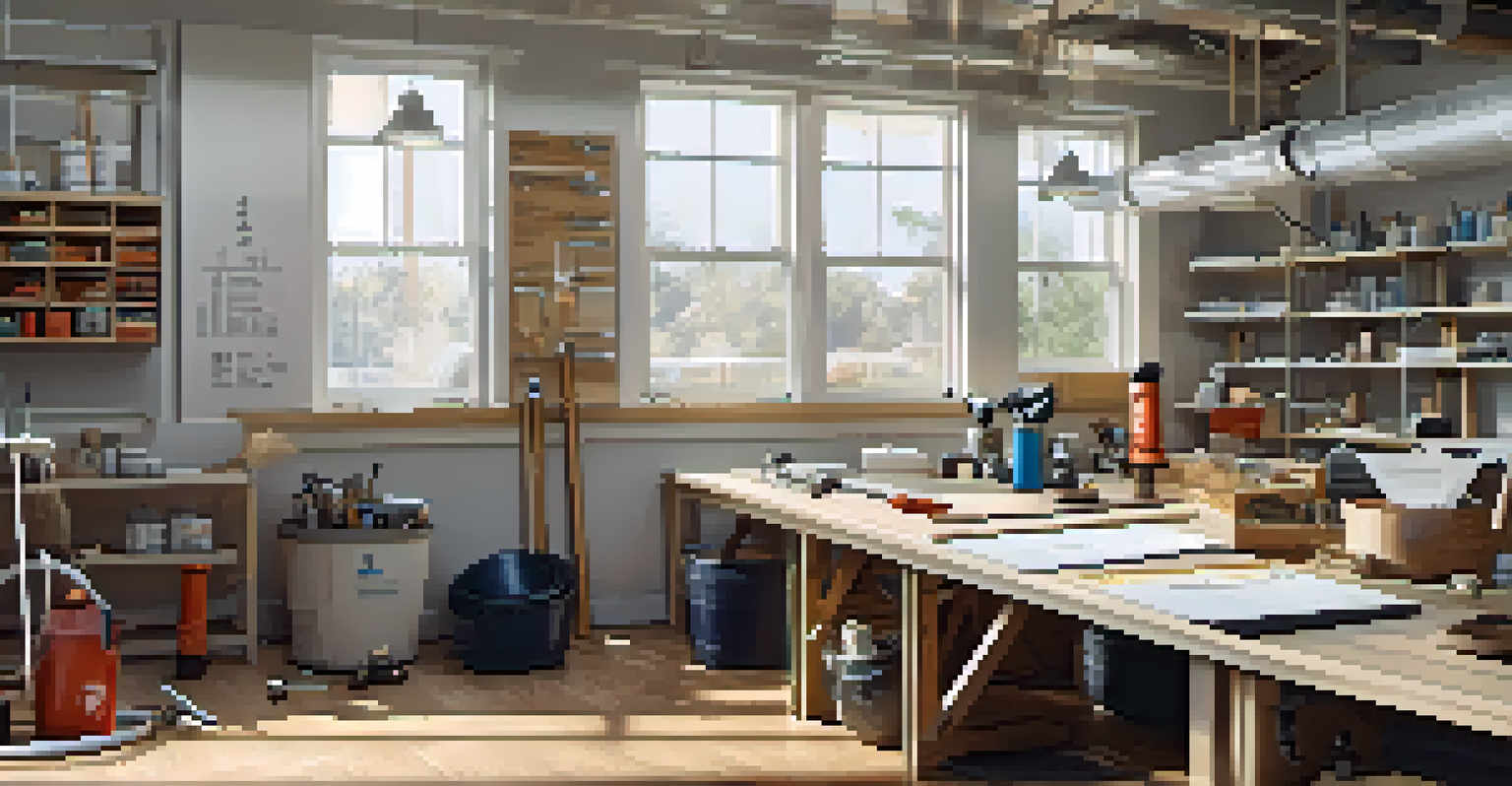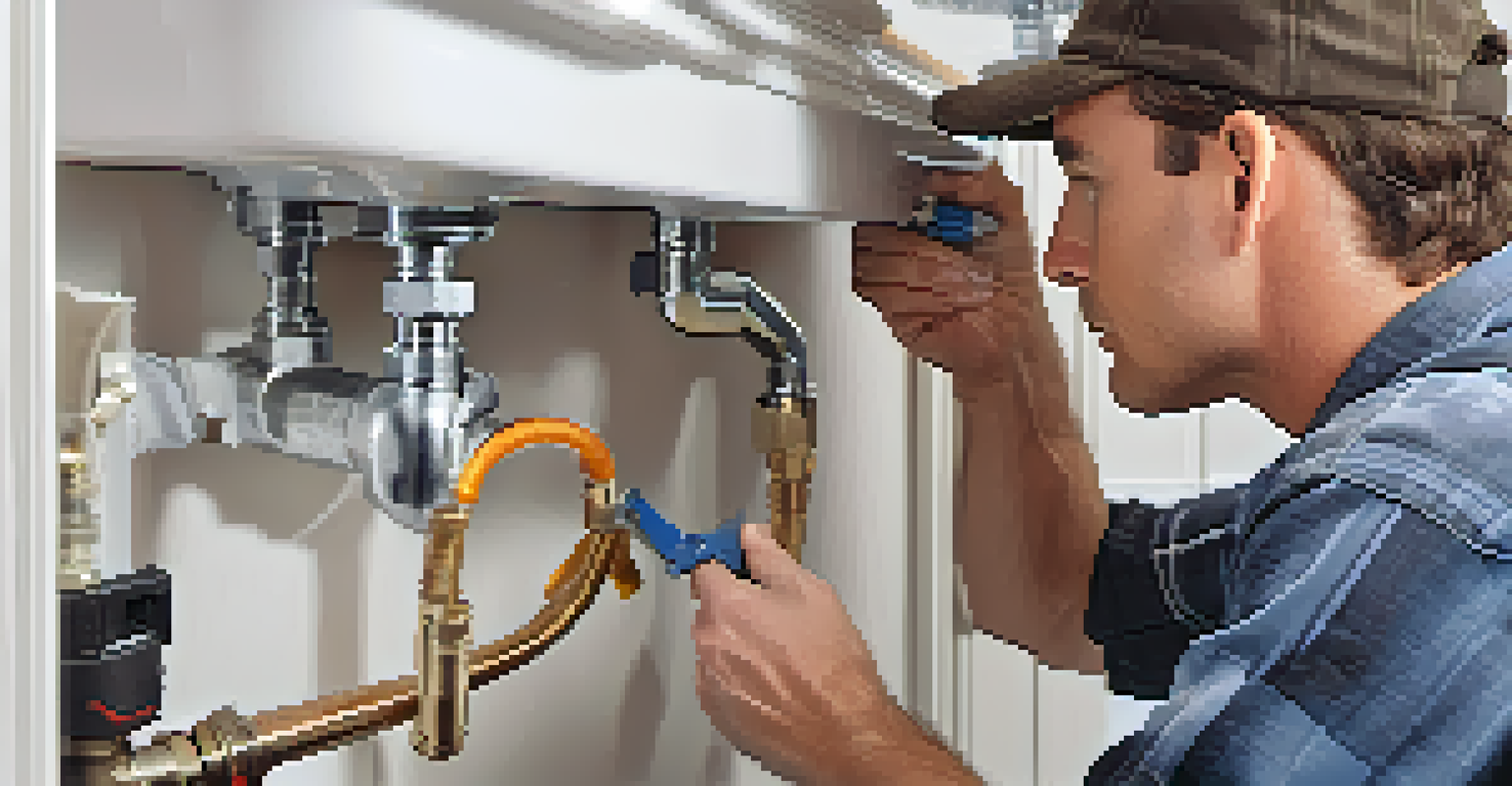How to Avoid Common Plumbing Mistakes During Renovation

Plan Your Plumbing Layout Before You Start
Before diving into any renovation, take a moment to sketch your plumbing layout. This will help you visualize where pipes, fixtures, and drains will go, preventing last-minute headaches.
An ounce of prevention is worth a pound of cure.
Consider the flow of water and waste in your design. For instance, placing your sink too far from the main drain can lead to slow drainage and potential clogs down the line.
A well-thought-out plan not only saves you time but also cuts costs by minimizing the need for adjustments once the work is underway.
Don’t Ignore Local Plumbing Codes and Regulations
Every area has plumbing codes that dictate how installations should be done. Ignoring these codes can lead to serious issues, including fines and unsafe conditions.

Research local regulations before starting your project. This ensures your renovation is compliant and can save you from having to redo work later on.
Working with a licensed plumber can help you navigate these codes, ensuring your project meets all necessary legal requirements.
Use Quality Materials for Long-lasting Results
When it comes to plumbing, cutting corners with cheap materials can lead to bigger problems down the road. Think of it like building a house of cards; one weak card can bring the whole structure crashing down.
The bitterness of poor quality remains long after the sweetness of low price is forgotten.
Investing in quality pipes, fittings, and fixtures will pay off in the long run, as they are less likely to leak or break. Consider materials like copper or PEX for durability.
While the initial cost might be higher, the peace of mind and fewer repairs will ultimately save you money and hassle.
Don’t Overlook the Importance of Ventilation
Proper ventilation is crucial for plumbing systems to function effectively. Without it, you may experience slow drainage, odors, and even pressure issues.
Make sure to include vent pipes in your plan, as they allow air to enter the plumbing system. This helps maintain pressure and promotes efficient drainage.
Neglecting ventilation could lead to frustrating plumbing issues, so make it a priority in your renovation.
Avoid DIY Plumbing When You’re Unsure
While DIY projects can be rewarding, plumbing is one area where caution is key. If you're not confident in your skills, it's best to call in a professional.
Mishandling plumbing tasks can result in costly mistakes, such as leaks that could damage your home or health hazards from improper installations.
Investing in a licensed plumber might seem like an added expense, but it can save you from future headaches and ensure the job is done right.
Double-Check All Connections and Seals
After installing plumbing fixtures, take the time to thoroughly check all connections and seals. A loose connection can lead to leaks, creating water damage that’s expensive to fix.
Use plumber's tape and ensure fittings are tightened properly. It’s often the little things that can cause big problems, so don’t rush this step.
A careful inspection can save you from a flood of issues later, keeping your renovation on track and your home safe.
Consider Future Needs During Your Renovation
When planning your plumbing, think about not just your current needs but also future possibilities. Will you want to add a bathroom or upgrade fixtures later?
Anticipating these changes can save you time and money. For example, installing additional plumbing access points can make future renovations much easier.

By planning ahead, you can create a flexible plumbing system that adapts to your lifestyle changes without requiring a complete overhaul.
Stay Organized Throughout the Renovation Process
A successful renovation hinges on good organization. Keep track of all plumbing plans, receipts, and correspondence with contractors to avoid confusion.
Using a project management app or a simple binder can help you stay on top of everything. This way, you’ll have all the details at your fingertips when needed.
Being organized not only helps the project run smoothly but also ensures you don't overlook important plumbing details that could lead to mistakes.